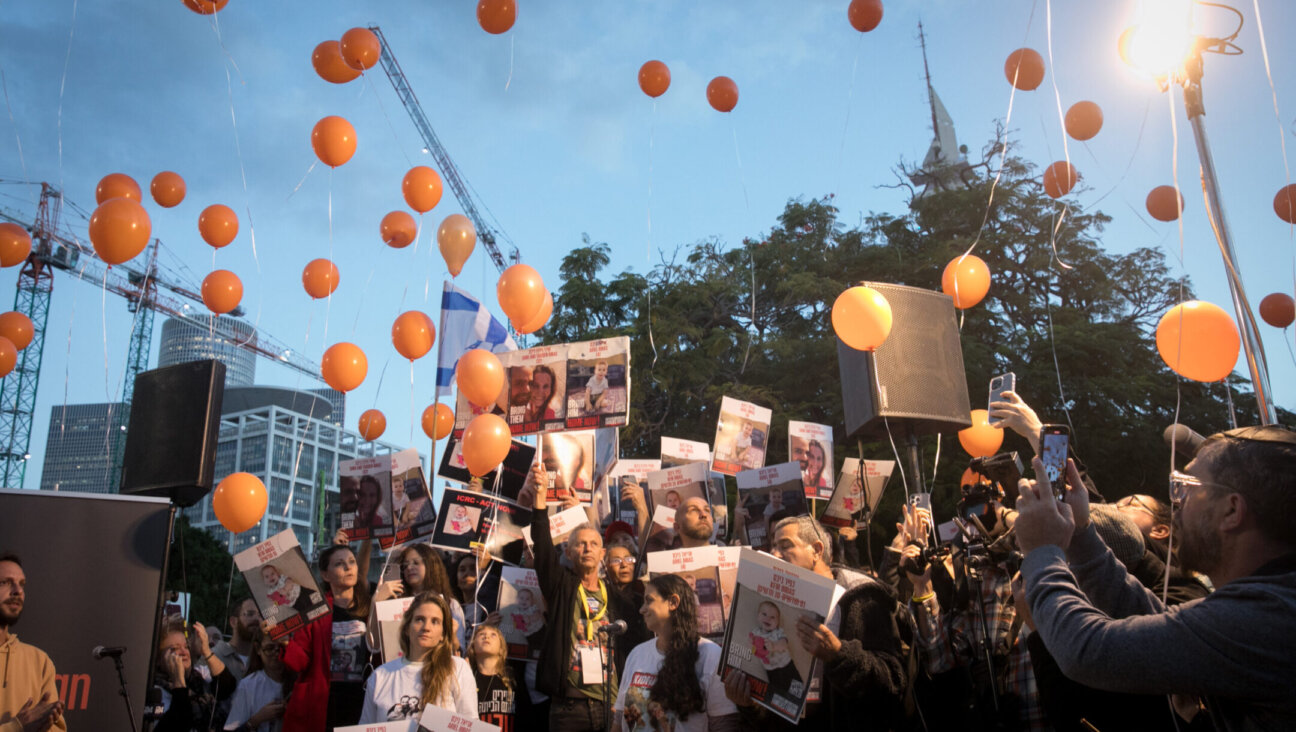32 Things You Should Know About The Forward’s 2014 Salary Survey

Image by Lior Zaltzman
1) The number of women in leadership roles is no better now in major national Jewish federations, service and advocacy groups and religious and educational institutions than it was five years ago, when the Forward compiled its first list of executive salaries in communal institutions. There were 11 in 2009; there are 11 today.
2) On average, men run large organizations and women run small ones.
3) Thats true among all American charities. But the disparities are greater in the Jewish ones.
4) A comprehensive study published in September by GuideStar found that only 17% of not-for-profits with budgets larger than $50 million had a female CEO. In the Forward survey, only one woman Ruth Messinger, president of American Jewish World Service has a budget that size. Thats 1.4% of our total (rounding up).
Women On Top from Jewish Daily Forward on Vimeo.
5) Jews are slightly ahead of evangelicals in this category. The first Women in Leadership National Study of 1,368 evangelical charities, also released in September, found that not a single one with a budget larger than $50 million had a woman CEO.
6) But evangelicals do have a higher percentage of women in charge overall: 17.5% to 14.9% in the Forwards survey.
7) Back to the Jews. Women lead organizations with median expenses of $5.4 million. Men lead organizations with median expenses of $24.7 million.
8) This difference explains about half of the gap in pay between men and women.
13) The five most overpaid CEOs were all men — and the same men on last year’s most overpaid list. But the order changed slightly.
14) Matthew Brooks, executive director of the Republican Jewish Coalition, topped this year’s list with a salary 154% higher than expected (though he took home 0.11% less than in the prior year). His elevated rank may be attributed to the fact that 2013 was not an election year, and the RJC’s expenses were considerably lower than in 2012. Same salary + smaller budget = more overpaid.
15) Asked for a response, David Flaum, the RJC’s chairman, sent this to the Forward: “Based on Matt’s 23-year tenure as Executive Director, his superb record of raising money, growing the organization and launching vital and effective pro-Israel campaigns, the Board believes Matt’s salary is fully appropriate and well deserved.”
16) Malcolm Hoenlein, executive vice chairman of the Conference of Presidents of Major American Jewish Organizations, came in second, earning 106% more than the formula indicated.
17) Next in line was Rabbi Marvin Hier, dean and founder of the Simon Wiesenthal Center (98% overpaid).
Who’s Overpaid and Who’s Underpaid?
18) But the rabbi’s own salary is not all the Wiesenthal Center paid to Hier’s family, since his wife and son also were on the payroll. Marlene Hier earned $388,431 from the Center and a related entity called SWC Museum Corp. SWC also paid Alan Hier $155,943.
19) That means the Hier family took home more than $1.3 million in 2013, a modest jump from the prior year.
20) The most underpaid executive on the list was Robert Wexler, president of American Jewish University, whose salary decreased by more than 12%.
21) David Zwiebel, executive vice president of Agudath Israel of America, held that distinction last year, but it obviously worked in his favor: He got a 35.6% raise, the biggest jump for anyone holding the same job year after year.
22) Even so, Zwiebel is now the fifth most underpaid leader on the list.
23) Besides being underpaid, the best way to get more money is to get a new job. It worked for Josh Block, the president and CEO of The Israel Project, who earned 64.1% more than his predecessor.
24) And it worked for David Fisher, the president of Birthright Israel Foundation, who is taking home 36.8% more than his predecessor. (He also has use of the foundation’s corporate apartment in New York City.)
25) This strategy may work for the two new women on the list: Naomi Adler, CEO of the Jewish Federation of Greater Philadelphia, and Stosh Cotler, CEO of Bend the Arc. But we won’t know until next year. Both the Philly federation and Bend the Arc declined to provide the current salaries for the new chiefs. So our survey published the salaries of their predecessors, both men.
26) All these data are compiled from the Form 990 that tax-exempt organizations are required to file every year with the Internal Revenue Service. Because there is a one- or two-year lag in filings, the Forward attempts to ascertain the most up-to-date figures, but many organizations don’t wish to release them until they have to.
27) Since explicitly religious organizations are not obliged to disclose salary and budget information, they don’t.
Who’s Paid What Where: Sort By Region
28) Still, it is striking that among the 19 religious and educational institutions listed by the Forward, women lead only two. Adler is the only woman at the helm of any of the 18 largest federations in the U.S.
29) Janice Weinman, executive director and CEO of Hadassah, is the most overpaid woman, earning 14% more than expected. Even so, she’s only the 23rd most overpaid executive.
30) And she’s not the highest earner at Hadassah. That honor goes to Richard Annis, the chief financial officer, who earned $437,588.
31) This year’s list does not include the Foundation for Jewish Culture, which disbanded. It does include an up-and-coming group, the Israeli-American Council, which is growing rapidly.
32) As he performed the analysis, Wyner said that he discovered a curious trend: “The organizations that overspent their budgets tended to pay their CEOs more.” He did not have an explanation.
Contact Maia Efrem at [email protected] and Jane Eisner at [email protected]
For a video about the 2014 Forward Salary Survey, please go to forward.com
















